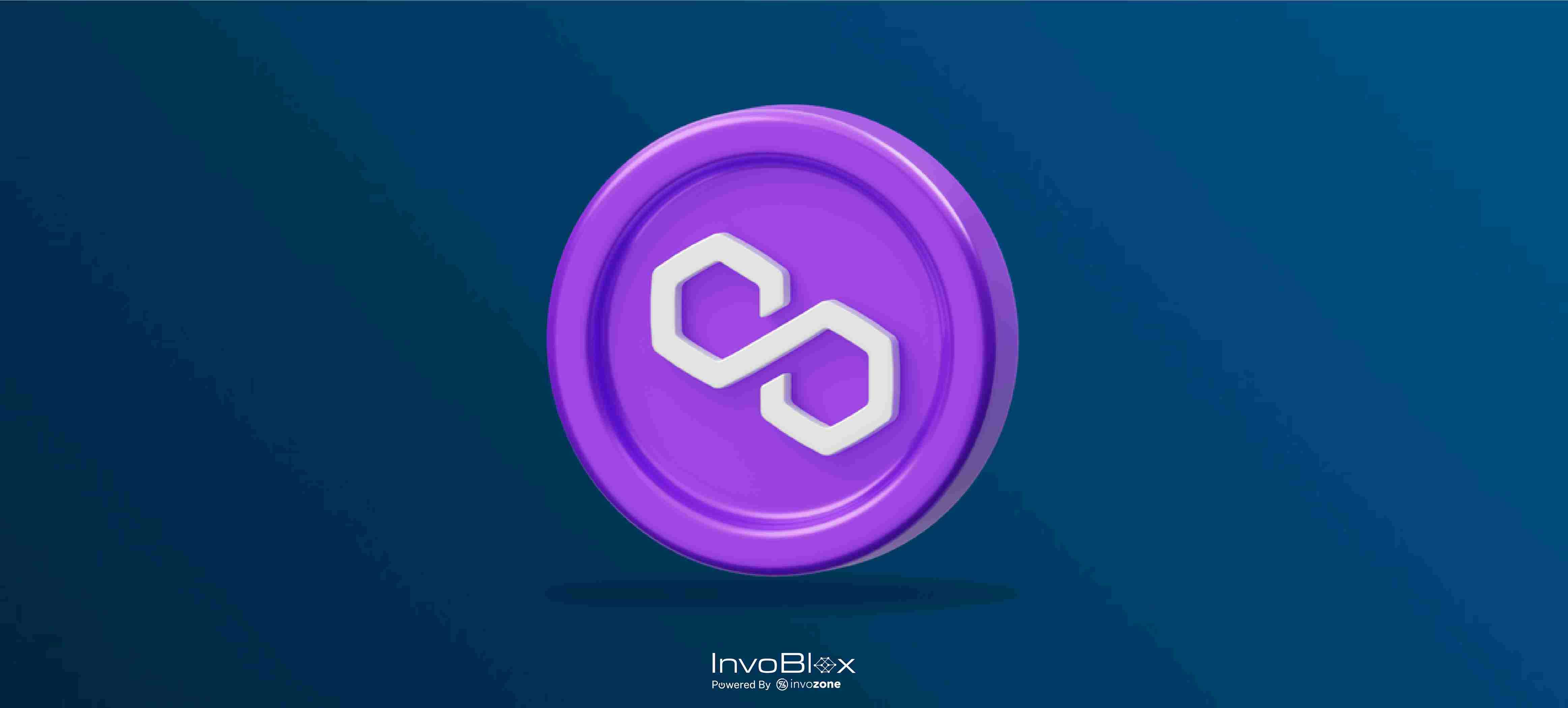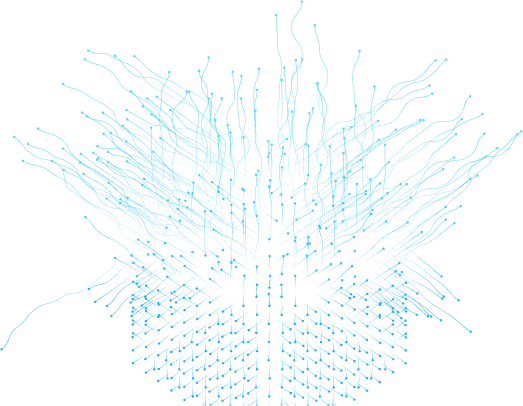
Decoding The Roadmap To Polygon 2.0
Table of Contents
Polygon 2.0 is Polygon’s take on next-gen Layer 2 solutions.
Scalability has always been one of blockchain’s major pain points. Polygon 2.0 is Polygon’s new approach to tackling the scalability problem of blockchain technology.
Polygon 2.0 aims to combine all existing functionalities and protocols of Polygon with zero knowledge proofs to enable web3 to be as accessible as web2.
The roadmap to Polygon l2, defined by Polygon, consists of 4 central stepping stones: the Value Layer, tokenomics, Zero Knowledge Layer 2, and Governance. In this article, we will go through all of them and see how they make Polygon v2 what it wants to be.
The Value Layer of the Internet
Polygon aims to make it the value layer of the internet. What do they mean by it? Mainly, there are two things that the internet has that blockchain technology does not. The first, as we know, is scalability. Over the past few years, the blockchain world has tried to address this through Polygon Layer 2, subnets, supernets, etc.
However, it has yet to reach the internet’s level of scalable solutions. The other main thing is the creation and propagation of information. On the internet, anyone and everyone can create and share information.
That is what Polygon 2 aims to achieve by being the value layer of the internet. It aims to provide the scalability that blockchain technology has not succeeded in so far and couple it with the democratization of economics like the internet has democratized information.
According to Polygon,
In blockchain, liquidity is tied to scalability. Blockchains aren’t scalable, and creating new ones to improve throughput decreases liquidity. Polygon bridge v2 aims to entangle the two. It is a network of Zero Knowledge Layer 2 chains, coupled together using a novel cross-chain coordination protocol so the entire network can act like a single chain.
Tokenomics
Since the beginning, Polygon has been using MATIC as the native token. As the architecture and infrastructure of Polygon move to Polygon 2.0, Polygon is also upgrading its native token.
The architectural and infrastructural changes to Polygon 2.0 would be strictly drastic as Polygon has published a whitepaper on the new native token. It is called POL. POL, like Polygon 2.0, is the subsequent generation implementation. It aims to make POL the primary tool of coordination and growth in the new Polygon heist 2.0. According to Polygon, POL will be the primary driver in reimagining Polygon 2.0 roadmap to the Value Layer of the Internet.
Following Bitcoin and Ethereum’s footsteps, with POL, Polygon roadmap introduces the next generation of native tokens. This third generation of native tokens is the hyperproductive token. It is similar to the productive tokens, which allow holders to be validators. On top of that, hyperproductive token offers two significant improvements. The first is that the holder can be a validator of multiple chains. The second is that a holder could have various roles.
This design change enables the POS Polygon ecosystem to grow superlatively. It would have the following benefits:
- Ecosystem Security
- Infinite scalability
- Ecosystem support
- Community ownership
- No friction
As per Polygon,
Polygon PoS -> ZK L2
Polygon unlimited currently uses the Polygon PoS network protocol. Polygon 2.0 is working to pull off a consensus mechanism change and one on a Layer 2 chain. On top of that, it is trying to become the first Layer 2 chain secured by Zero-Knowledge proofs. Polygon future is aiming to move to zkEVM validium.
According to Polygon,
Polygon after Ethereum 2.0 promises to upgrade without breaking the working of the current ecosystem.
zkEVM validium would offer lower fees, higher scalability, and higher security. It would leverage zero-knowledge proofs and Ethereum development to achieve that.
After the upgrade, Polygon PoS bridge would become the first validium with decentralized and secure data availability guarantees and a decentralized sequencer set.
Governance
As the rest of the aspects of Eth 2.0 Polygon upgrade, so will governance in Polygon 2.0.
According to Polygon, the governance and decision-making would lie with the community on the network. According to their website,
“To make this possible, we are proposing a forward-looking framework for decentralized ownership and decision-making over all Polygon protocols and the ecosystem. The framework defines three governance pillars, i.e. three main aspects of the Polygon ecosystem that require governance, and explores appropriate governance models for each.”
The governance framework of Polygon 2.0 can be divided into three pillars:
1. Protocol Governance: The polygon pos chain network improvement proposal would be expanded to cover the permissionless stack. This would enable the community to research and propose upgrades.
2. System Smart Contracts Governance: This will enable upgrading protocols pertaining to the smart contracts. An Ecosystem Council would be added to the ecosystem.
3. Community Treasury Governance: Done in three phases, community treasury governance aims to aid Polygon pos chain to stay on the growth trajectory.
Concluding thoughts
Polygon 2.0 has set its aim high. The theory is laid out, but what is left to be seen is whether the implementation matches it, and if it does or does not, how it would be perceived by the community, and if it would be accepted.
Table of Contents
Polygon 2.0 is Polygon’s take on next-gen Layer 2 solutions.
Scalability has always been one of blockchain’s major pain points. Polygon 2.0 is Polygon’s new approach to tackling the scalability problem of blockchain technology.
Polygon 2.0 aims to combine all existing functionalities and protocols of Polygon with zero knowledge proofs to enable web3 to be as accessible as web2.
The roadmap to Polygon l2, defined by Polygon, consists of 4 central stepping stones: the Value Layer, tokenomics, Zero Knowledge Layer 2, and Governance. In this article, we will go through all of them and see how they make Polygon v2 what it wants to be.
The Value Layer of the Internet
Polygon aims to make it the value layer of the internet. What do they mean by it? Mainly, there are two things that the internet has that blockchain technology does not. The first, as we know, is scalability. Over the past few years, the blockchain world has tried to address this through Polygon Layer 2, subnets, supernets, etc.
However, it has yet to reach the internet’s level of scalable solutions. The other main thing is the creation and propagation of information. On the internet, anyone and everyone can create and share information.
That is what Polygon 2 aims to achieve by being the value layer of the internet. It aims to provide the scalability that blockchain technology has not succeeded in so far and couple it with the democratization of economics like the internet has democratized information.
According to Polygon,
In blockchain, liquidity is tied to scalability. Blockchains aren’t scalable, and creating new ones to improve throughput decreases liquidity. Polygon bridge v2 aims to entangle the two. It is a network of Zero Knowledge Layer 2 chains, coupled together using a novel cross-chain coordination protocol so the entire network can act like a single chain.
Tokenomics
Since the beginning, Polygon has been using MATIC as the native token. As the architecture and infrastructure of Polygon move to Polygon 2.0, Polygon is also upgrading its native token.
The architectural and infrastructural changes to Polygon 2.0 would be strictly drastic as Polygon has published a whitepaper on the new native token. It is called POL. POL, like Polygon 2.0, is the subsequent generation implementation. It aims to make POL the primary tool of coordination and growth in the new Polygon heist 2.0. According to Polygon, POL will be the primary driver in reimagining Polygon 2.0 roadmap to the Value Layer of the Internet.
Following Bitcoin and Ethereum’s footsteps, with POL, Polygon roadmap introduces the next generation of native tokens. This third generation of native tokens is the hyperproductive token. It is similar to the productive tokens, which allow holders to be validators. On top of that, hyperproductive token offers two significant improvements. The first is that the holder can be a validator of multiple chains. The second is that a holder could have various roles.
This design change enables the POS Polygon ecosystem to grow superlatively. It would have the following benefits:
- Ecosystem Security
- Infinite scalability
- Ecosystem support
- Community ownership
- No friction
As per Polygon,
Polygon PoS -> ZK L2
Polygon unlimited currently uses the Polygon PoS network protocol. Polygon 2.0 is working to pull off a consensus mechanism change and one on a Layer 2 chain. On top of that, it is trying to become the first Layer 2 chain secured by Zero-Knowledge proofs. Polygon future is aiming to move to zkEVM validium.
According to Polygon,
Polygon after Ethereum 2.0 promises to upgrade without breaking the working of the current ecosystem.
zkEVM validium would offer lower fees, higher scalability, and higher security. It would leverage zero-knowledge proofs and Ethereum development to achieve that.
After the upgrade, Polygon PoS bridge would become the first validium with decentralized and secure data availability guarantees and a decentralized sequencer set.
Governance
As the rest of the aspects of Eth 2.0 Polygon upgrade, so will governance in Polygon 2.0.
According to Polygon, the governance and decision-making would lie with the community on the network. According to their website,
“To make this possible, we are proposing a forward-looking framework for decentralized ownership and decision-making over all Polygon protocols and the ecosystem. The framework defines three governance pillars, i.e. three main aspects of the Polygon ecosystem that require governance, and explores appropriate governance models for each.”
The governance framework of Polygon 2.0 can be divided into three pillars:
1. Protocol Governance: The polygon pos chain network improvement proposal would be expanded to cover the permissionless stack. This would enable the community to research and propose upgrades.
2. System Smart Contracts Governance: This will enable upgrading protocols pertaining to the smart contracts. An Ecosystem Council would be added to the ecosystem.
3. Community Treasury Governance: Done in three phases, community treasury governance aims to aid Polygon pos chain to stay on the growth trajectory.
Concluding thoughts
Polygon 2.0 has set its aim high. The theory is laid out, but what is left to be seen is whether the implementation matches it, and if it does or does not, how it would be perceived by the community, and if it would be accepted.





